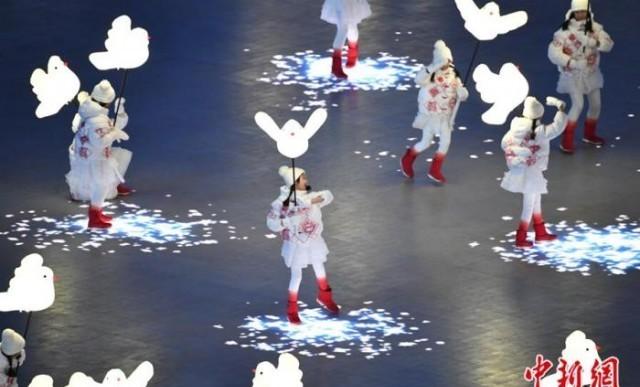The opening ceremony of the Beijing Winter Olympics made a stunning appearance on the evening of the 4th, igniting everyone's "ice and snow enthusiasm" on the winter night.
During this period, the perfect interaction between the children and the big screen under their feet, the wind and snow special effects and the seamless cooperation of the actors left a deep impression on many audiences. The key here is an artificial intelligence technology — Intel's 3DAT 3D athlete tracking technology running on third-generation Xeon Scalable processors.

The scene of the opening ceremony of the Beijing Winter Olympics. Photo by China News Service reporter Li Jun
It is a complex system, composed of three subsystems of camera information collection, data analysis, and artistic effect rendering, and its core algorithm is based on computer vision, AI real-time human body detection and position tracking technology.
The powerful computing power and advanced AI algorithm technology support in this system make the huge LED screen laid on the ground of the opening ceremony site become "interactive".
On the evening of February 4, the opening ceremony of the XXIV Winter Olympic Games was held at the Beijing National Stadium. The picture shows the main torch. Photo by Cui Nan, a reporter from China News Service
This technology is not only applied to the opening ceremony of the Beijing Winter Olympic Games, but also becomes a "sharp weapon" that allows athletes to improve their sports performance.
In previous practical training, coaches usually coach athletes through experience points and the naked eye. The 3DAT three-dimensional athlete tracking technology is based on sports video, through artificial intelligence and computer vision algorithms to extract athletes' bone and muscle shape and trajectory from standard video sources, reconstruct the athlete's 2D and 3D skeleton motion posture and trajectory model, and generate biomechanical data, establish a model while outputting sports performance analysis, help athletes understand their own sports details, analyze substandard actions, and help athletes better release their sports potential.
This is not all the "black technology" of this Winter Olympic Games, and the process of venue construction is also full of futuristic feeling.
In the construction of multiple venues such as competition venues, Olympic villages, and main media centers, the application of VSS digital twin venue simulation services visualizes, dynamics, and parameters the venues and the event process in three dimensions, and copies the real venues into digital and virtualized online venues.
In addition, at the Athletes' Entertainment Center in Beijing Winter Olympic Village (Winter Paralympic Village), Intel and partners have worked together to create a rich overall solution for the entertainment center, skillfully combining Olympic content with modern technology and traditional Chinese culture to provide an original and immersive experience.
This includes allowing experiencers to feel the achievements of modern Chinese science and technology in the immersive experience of "going to the sky into the sea"; allowing traditional Chinese cultural content such as the Terracotta Warriors and Horses of Qin Shi Huang and Dunhuang murals to be displayed through modern virtual reality technology.
The VR experience area supported by Intel is equipped with MULTIPLE experience modules such as VR rhythm lightsaber and VR theater, so that participants can get rich game details and immersive visual experience in the interaction; the experience center also has a ski simulator to realistically simulate the skiing experience, so that players feel as if they are in the snow, and through technology, they can not only achieve immersive viewing but also immersive "participation". (End)
Source: China News Network